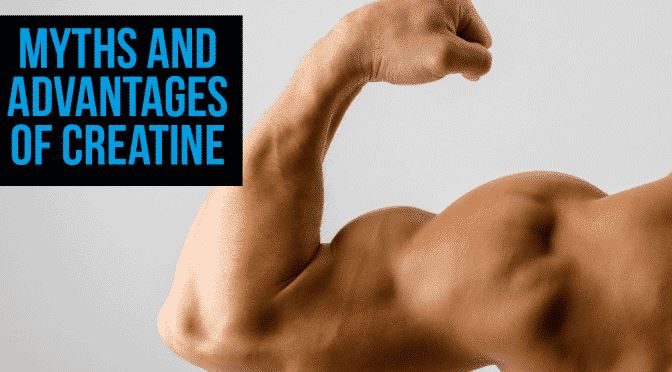Looking to step up your workout routine and checking out the different supplements available? If so, you aren’t alone. As many people progress and gain that base level of fitness, they start to wonder what else they could accomplish.
As you start increasing the intensity of your workout program, you might also start to wonder what you can do in terms of supplementation to help go that extra mile. Today we’re going to talk about one heavily discussed sports supplement – creatine. You may have heard about this supplement before, but don’t jump to any conclusions until you read the following.
What is Creatine

First let’s talk about what creatine is. Creatine, short for creatine monohydrate, is the precursor to the high energy molecule, ATP. ATP is what fuels each and every muscular contraction that you make as you go about your workout sessions.
Each workout, you’re going in with so much ATP. Once that ATP is utilized, if no more creatine is present in the body tissues to form new ATP, your workout will stop. You will no longer be able to produce contractions at the same intensity you were before.
So in essence, you are strictly limited by your creatine levels. This is where supplementation comes in helpful. By adding this to your protocol, you go in with a fully saturated level of creatine, ready to generate more ATP as needed.
Myths Surrounding Creatine
There are a number of myths that surround this supplement, which are important to familiarize yourself with. First, there is the notion that by simply using creatine, you will build pounds of new
muscle mass – dramatically increasing your weight.
Now, you will gain some weight when you first starting using creatine, but take note, it’s not going to be muscle. This product does cause you to retain more water weight, so the initial 5-10 pounds you gain, will be mostly water. If you stop using
creatine, you’d then lose this water weight. The second myth is that you must go through a loading phase for it to be effective. In
some cases, this can cause cramping in certain individuals, which is enough to put them off using it entirely. Again, this isn’t correct. You don’t have to do the loading if you don’t want to. It can help you reach full saturation faster, but if you just use a daily normal dose of 5 grams per day, you will eventually reach the point you need to be – it’ll just take longer. Understanding these two primary myths can help you make a more informed decision if this product is for you.
The Benefits Of Using This Supplement
Now, why should you use it in the first place? As someone who is about to boost the intensity of their program to help build more muscle and get in better physical shape, using creatine can help you push just a little harder in the gym.
You might be able to squeeze out an additional two reps – reps you would have not done if you weren’t using creatine.
In one study published by the Journal of Strength & Conditioning Research, it was noted that when subjects were given creatine supplementation with their workouts, their strength increased 8% higher than what it did with those who were just resistance training alone.
In addition to this, it may help you bounce back quicker between workouts. So before when you needed a day off between each workout, now you can do workouts back to back (for different muscle groups). More frequent workouts means greater
progression – as long as you are recovered.
Many people who use creatine also find that it helps their endurance capacity as well. You may find that you can exercise longer before hitting that point of fatigue. So while creatine itself doesn’t cause muscle gain automatically, because it helps you do more work, this may cause more muscle gain to occur. It’s still you producing the
results you see, but with creatine on your site, you can work harder to see those results faster and to greater magnitude. So consider creatine as you go about trying to achieve new heights. It’s safe to use and has been a very well documented supplement, proving for providing muscle and strength gaining benefits.





